Compostable, degradable, biodegradable and oxodegradable plastics
August 15, 2024
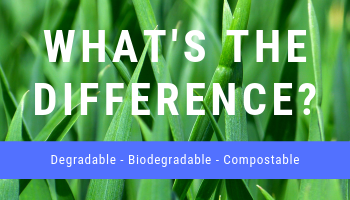
Increasing consumer awareness of the impact of plastics in the environment has encouraged manufacturers, brands and retailers to launch a large number of new plastic materials onto the market. Unfortunately they aren’t always as good as they seem.
For example, The Big Compost experiment, a citizen science test of how well compostable plastic items break down in home compost bins, found that the majority did not break down, including 60% of those marked as being “home compostable”. You can read a full report here.
Currently it’s not possible to recycle or compost these new materials via kerbside collections in all areas of the UK, including Leicestershire.
This is a brief guide to the types of degradable plastics you may encounter, a summary of what you need to know about each, and how best to dispose of them in Leicestershire.
Use the table below to find out how best to dispose of the most common non-standard types of plastic in Leicestershire, assuming you can’t find a way to reuse them.
To find more information about each featured plastic, click on the links in the table below.
| Type of plastic | What to look out for | Can it be recycled? | Can it be composted at home, or placed into a garden waste collection? | How to dispose of it responsibly | Additional information |
|---|---|---|---|---|---|
| Home Compostable | You’ll see a ‘Seedling’ logo or the OK Compost – Home certification mark. | No.
Home compostable plastics will contaminate otherwise recyclable materials in a recycling collection. |
Yes.
These items can be composted at home in a home compost bin. They are not suitable for garden waste bins however. |
If you can’t compost them at home, these plastics should be disposed of in the residual waste bin where it will be sent to landfill or for energy recovery. | In trials, the decomposition rate of certified home compostable items has been found to vary a lot. Be prepared to run the item through your compost bin a couple of times and try not to dispose of large quantities of home compostable plastics all in one go. |
| Compostable – Industrial | Look for the OK Compost – Industrial logo, or the “Seedling” certification marks. | No.
Plant based compostable plastics will contaminate otherwise recyclable materials. |
No. | Place the item in your residual waste bin. It will be sent to landfill or for energy recovery. | Compostable plastics are commonly designed to break down in conditions found in industrial composting facilities. However, those facilities can’t distinguish between compostable and non-compostable plastics. To avoid contamination all types of plastics are banned from green / garden waste collections in Leicestershire. |
| Degradable | There isn’t a widely recognised standard or logo for degradable plastics. Most will have the word ‘degradable’ on them somewhere, often accompanied by imagery suggesting that the product is ‘eco-friendly’. | No.
Degradable plastics will contaminate otherwise recyclable materials. |
No. | Place the item in the residual waste bin where it will be sent to landfill or for energy recovery. | Degradable plastics can be made from petro-chemicals or derivatives of natural materials such as cornstarch. |
| Oxo-degradable | There isn’t a widely recognised or adopted standard or logo.
Each manufacturer typically uses its own symbol to denote the product meets its own standards. |
No.
Oxo-degradable plastics will contaminate otherwise recyclable materials. |
No. | Place oxo-degradable items in the residual waste bin. They will be sent to landfill or for energy recovery. | It is thought that oxo-degradable plastics are more likely to be littered than other types of plastics as people think that they are ‘safe’ to dispose of in this way, however this is not the case. |
| Biodegradable | There isn’t a widely recognised standard or logo to look out for.
Each manufacturer typically uses its own symbol or trademark to denote the product meets its own specific standards. |
No.
Biodegradable plastics will contaminate otherwise recyclable materials. |
No. | Place biodegradable items in the residual waste bin. They will then be disposed of in landfill or energy from waste. | Plastics sold as being biodegradable are more likely to be littered than other types of plastic.
Biodegradable plastics often need specific conditions in order to break down. If they are littered in an area without these specific conditions, they will persist in the environment. |
| Bioplastic / Biobase / Plant based | There isn’t a single widely recognised logo or certification mark. | Possibly.
Plant based plastics can be recycled. Plastics with any type of compostable certification / logo and those with a biodegradable certification / logo can’t be recycled in your kerbside bin. |
No. | Place items in the recycling collection, unless they are marked as being biodegradable, compostable or home compostable. Those marked as such should be placed in the residual waste collection (or home composted as appropriate). | Bio-plastics are made entirely from or with a high percentage of non-fossil fuel derived materials. Bio-plastics aren’t necessarily bio-degradable or compostable. Those that are will be marked as such. |
Degradable plastics:
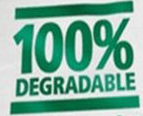
There is no independent standard for degradable plastics, and no widely recognised logo.
- Shouldn’t be placed into kerbside recycling collections.
- Shouldn’t be placed into kerbside green or garden waste collections.
- Shouldn’t be home composted.
- Can be placed in the residual waste bin.
The technical definition of a degradable plastic is; “a plastic designed to undergo a significant change in its chemical structure under specific environmental conditions resulting in a loss of some properties that may vary as measured by standard test methods appropriate to the plastic and the application in a period of time that determines its classification“.
In simple terms, a degradable plastic is one which fragments into ever increasingly small pieces over time. Typically the fragmentation will continue until the individual pieces become invisible to the naked eye. Some claim this is desirable because if a degradable plastic item is littered it poses less of a physical risk to wildlife. Compared to regular plastics, degradable items are also less likely to remain visible for long periods of time if littered. However, plastics labelled as being ‘degradable’ provide no guarantees as to how long the fragmentation will take, what conditions will cause the fragmentation, or that the fragmentation products will be ‘safe’ for the environment.
This is a contentious issue. Fragmentation results in the creation of small plastic pieces known as micro and nano-plastics. These persist in microscopic form for long periods of time (estimates vary but most are in excess of 400 years). Micro-plastics entering into soils and waterways can become food for small organisms. Once in the food chain, those plastic particles can and do enter the human diet. Research by the World Wildlife fund estimated that the average person ingests in excess of five grams of plastic each week (enough to make a credit card).
There is no scientific consensus on what the impact of consuming microplastics might be on the health of plants, animals and humans and more independent research is needed.
The fragmentation of degradable plastics makes them highly unsuitable for recycling. Degradable plastics should not be placed into recycling collections as they can contaminate large quantities of plastic that could otherwise be recycled.
If you have to dispose of plastics marked as being ‘degradable’ it is best to do so in your residual waste collection; to reduce the risk of contamination with recyclable plastics, and to reduce the potential risk posed by microplastics entering our soils, waterways and ultimately our food.
Oxo-degradable plastics:
Oxo-degradable plastic bags have been banned in the EU and are likely to disappear from circulation. They are however in widespread use in other parts of the world.
- Shouldn’t be placed into kerbside recycling collections.
- Shouldn’t be placed into kerbside green or garden waste collections.
- Shouldn’t be home composted
- Can be placed in the residual waste bin.
Oxo-degradable plastics are a type of degradable plastic designed to fragment in the presence of oxygen. Oxo-degradable plastics will not break down at all, or will break down extremely slowly in environments with relatively low concentrations of oxygen such as in marine environments, if covered by soil or buried in a compost bin.
Oxo-degradable plastics produce micro-plastic fragments as they break down. Microplastics can persist in the environment for long periods of time (approximately 400 years) during which time they can contaminate soils and waterways and also enter the food chain. The effect of consuming these micro-plastic fragments upon plants, animals and humans is unknown. Oxo-degradable plastic bags were banned by the EU in March 2019 due in part to the potential risks posed by microplastics entering the food chain.
Oxo-degradable plastics are non-recyclable and they can contaminate plastics and other materials that would otherwise be recyclable. They should not be disposed of in kerbside recycling collection bins.
Oxo-degradable plastics should be disposed of via the residual waste collection to avoid the risk of contaminating recyclable plastics and to minimise the risk of microplastics entering the food chain.

Some manufacturers choose to label their bio-plastics, although they are under no legal obligation to do so.
Bioplastics / Biobased / Plant based plastics:
- Can typically be placed into kerbside recycling collections.
- Shouldn’t be placed into kerbside green or garden waste collections.
- Can only be home composted if specifically labelled as being suitable for home composting.
- Can be placed in the residual waste bin.
Bioplastic is a term used to describe what a plastic is made from, not how it degrades. Regular plastics are made from fossil fuel derived ingredients, whilst bio-plastics are made from ‘naturally’ derived materials such as; vegetable fats and oils, corn starch, straw, wood chippings, sawdust, algae or seaweed – materials which typically contain high concentrations of cellulose, starch or lactic acid. Some bio-plastics contain a mixture of fossil fuel and natural derived materials. A manufacturer may choose to show the percentage of non-fossil fuel derived content on a label.
It is unsafe to assume that a bioplastic is more sustainable or ‘environmentally friendly’ than a fossil fuel based plastic. Growing crops to produce the vegetable fats and oils etc. needed to produce bioplastics can have negative consequences for the environment.
Because of the potential for confusion between the words bio-plastic and bio-degradable, manufacturers have been advised that it is best practice to use terms such as “plant based” or “biobased” instead. However, this is simply advice and not a legal requirement, and a variety of terms are currently in use. You’ll need to pay attention when deciding how best to dispose of individual items.
Bio-plastics aren’t necessarily bio-degradable. Those that are bio-degradable will be labelled as such, but otherwise assume that the bioplastic is materially identical to a regular plastic and has the potential to persist for long periods of time in the environment, and to produce microplastics.
It is unsafe to assume that a bio-plastic item is compostable or home compostable. If it is, it will be labelled as such. If it isn’t labelled as being compostable, please assume that bioplastics need to be disposed of in the same way you dispose of regular plastics of a similar kind.
The majority of bioplastics are recyclable and can be placed in your kerbside recycling collection. However those that are also labelled as being bio-degradable, compostable or home compostable are not recyclable. Black coloured bioplastics are not recyclable either and should be disposed of in the residual waste bin (or home composted if appropriate).
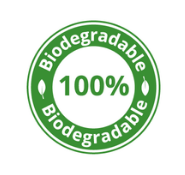
There is no standardised logo to look out for. Different manufacturers will use their own. Some of these suggest that biodegradable plastics are recyclable which can cause confusion.
Biodegradable plastics:
- Shouldn’t be placed into kerbside recycling collections.
- Shouldn’t be placed into kerbside green or garden waste collections.
- Can only be home composted if specifically labelled as being suitable for home composting.
- Should be placed in the residual waste bin.
Biodegradable plastics are those which are designed to be broken down by the action of living organisms. Typically microbes do the work of breaking down and consuming biodegradable plastics. Biodegradable plastics can be made from fossil fuels or ‘natural’ products such as corn-starch (these may be labelled as being biodegradable bioplastics).
Biodegradable plastics do not produce micro-plastics when they break down as the microbes metabolise and convert biodegradable plastics into energy and non-plastic waste products. Without these microbes, breakdown of the plastic will not occur.
Different biodegradable plastics require different microbes to break them down. Different microbes require specific conditions to survive in and they aren’t found everywhere. It’s not safe to assume that bio-degradation will take place in every environment. Some bio-degradable plastics will only break down in the extremely warm and wet conditions found in industrial anaerobic digesters. Because of this, bio-degradable plastics should not be littered as they may not bio-degrade as expected. Similarly, unless its labelled as being home compostable, assume that bio-degradable plastics aren’t suitable for home composting either.
Biodegradable plastics marked as being compostable or industrial compostable should not be home composted. These items are designed to break down only in the conditions found in industrial composting facilities. These items should be placed in the residual waste bin.
In Leicestershire, biodegradable plastics (even if marked as being compostable or home compostable) should never be placed in your green or garden waste collection. The industrial composting site staff are unable to check every single piece of plastic waste to determine if it is compostable biodegradable plastic, or another type of plastic. The compost produced on the site has to adhere to strict quality standards and so all types of plastic are strictly banned. Garden waste collections found to be containing any type of plastic will be regarded as being contaminated and will be sent to landfill. And if plastics are found in your garden waste collection at the kerbside, your bin may not be emptied.
It is uncertain if more effective screening will change the situation and enable biodegradable plastics to be sent to industrial composting sites via garden waste collections. This is because if large quantities of biodegradable plastics break down in a concentrated area, they can make nearby soils and waterways more acidic. This is likely to be detrimental to the compost being produced on an industrial site, and may impact negatively upon its surrounding environment.
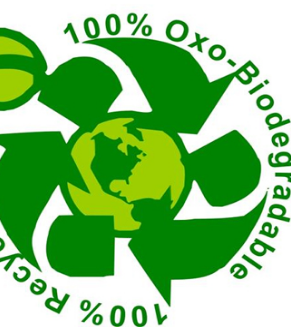
Many logos suggest that oxo-biodegradable plastics can be easily recycled. This is not the case.
Oxo-biodegradable plastics:
- Shouldn’t be placed into kerbside recycling collections.
- Shouldn’t be placed into kerbside green or garden waste collections.
- Can only be home composted if specifically labelled as being suitable for home composting.
- Should be placed in the residual waste bin.
Oxo-degradable bioplastics typically degrade in a two stage process. The first stage is the fragmentation of the item in the presence of oxygen. This initial fragmentation produces microscopic particles of bio-degradable plastic which are invisible to the naked eye. These micro-plastics can be further broken down and metabolised by microbes. However, as with other types of biodegradable plastic, the necessary microbes may not be present in all environments. If the microbes are not present in the environment where initial fragmentation occurs then further breakdown will not proceed and the micro-plastics will persist, potentially entering the food chain.
If the necessary microbes are present they will metabolise the microplastic fragments leaving only natural waste products. In high concentrations these can make soils and waterways more acidic.
Oxo-biodegradable plastics cannot be recycled and should be placed in the residual waste bin.
Oxo-biodegradable plastics cannot be composted on industrial sites in Leicestershire and so should not be placed in your green waste or garden waste collection – even if labelled as being compostable.
Oxo-biodegradable plastics labelled as being home compostable can be placed in your home compost bin. You should be aware that disposing of large quantities of items in this way may take some time.
Compostable plastics:
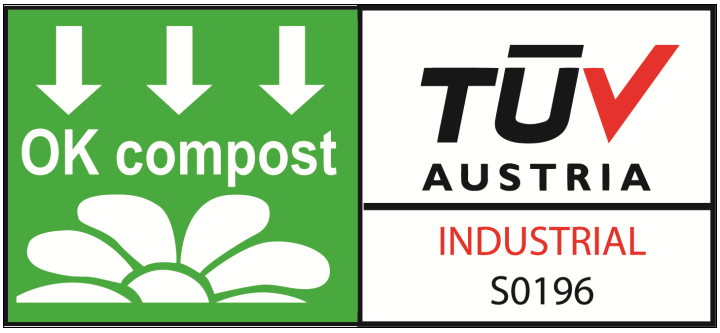
- Shouldn’t be placed into kerbside recycling collections.
- Shouldn’t be placed into kerbside green or garden waste collections.
- Shouldn’t be home composted.
- Should be placed in the residual waste bin.
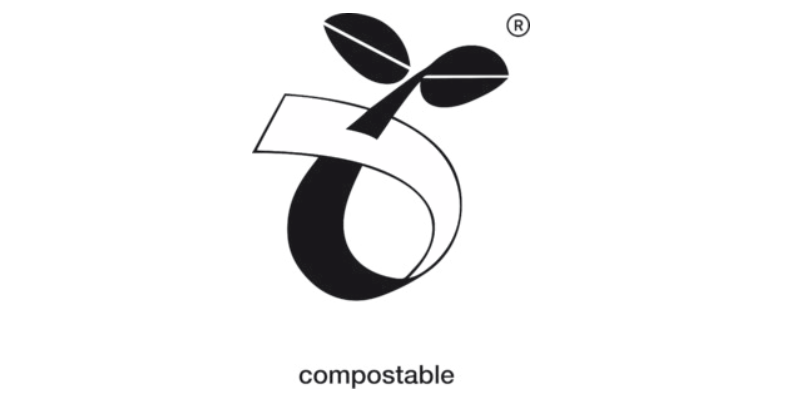 Compostable plastics are designed to break down in industrial compost or anaerobic digestion facilities. They will not break down in a domestic compost bin.
Compostable plastics are designed to break down in industrial compost or anaerobic digestion facilities. They will not break down in a domestic compost bin.
Compostable plastics can’t be disposed of in your garden or green waste collection.
In Leicestershire garden waste and green waste collections are sent to an industrial compost facility. However, it is impossible for compost site staff to distinguish between the many different types of plastic that may contaminate the green or garden wastes they work with. They have to assume that all plastics are non-compostable and will reject loads which contain plastics of any type.
Home compostable plastics: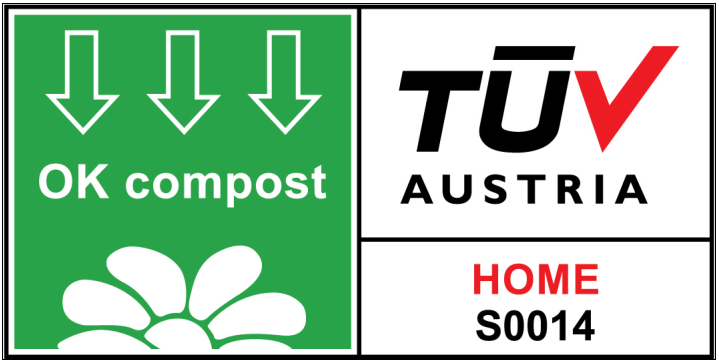
- Shouldn’t be placed into kerbside recycling collections.
- Shouldn’t be placed into kerbside green or garden waste collections.
- Can be home composted – typically in small quantities.
- Should be placed in the residual waste bin.
Plastics that are certified as being home compostable are designed to break down quickly in a home compost bin. They can be home composted, but may be slow to do so, particularly if you have more than a few small items to dispose of, or if your compost bin is not working properly. In this case Leicestershire residents can request support from a Master composter.
Home compostable plastics shouldn’t be disposed of in green or garden waste collection bins. Staff dealing with these wastes will assume that loads of containing plastics of any type are contaminated.
Home compostable plastics are non-recyclable. They should not be placed in your kerbside recycling collection as they may contaminate otherwise good, recyclable materials.
If you are not able to home compost these items yourself, or you have a lot to dispose of it may be worth asking for help from other composters. Try using sites like sharewaste.com.
If that is not an option the items should be disposed of in the residual waste bin.










